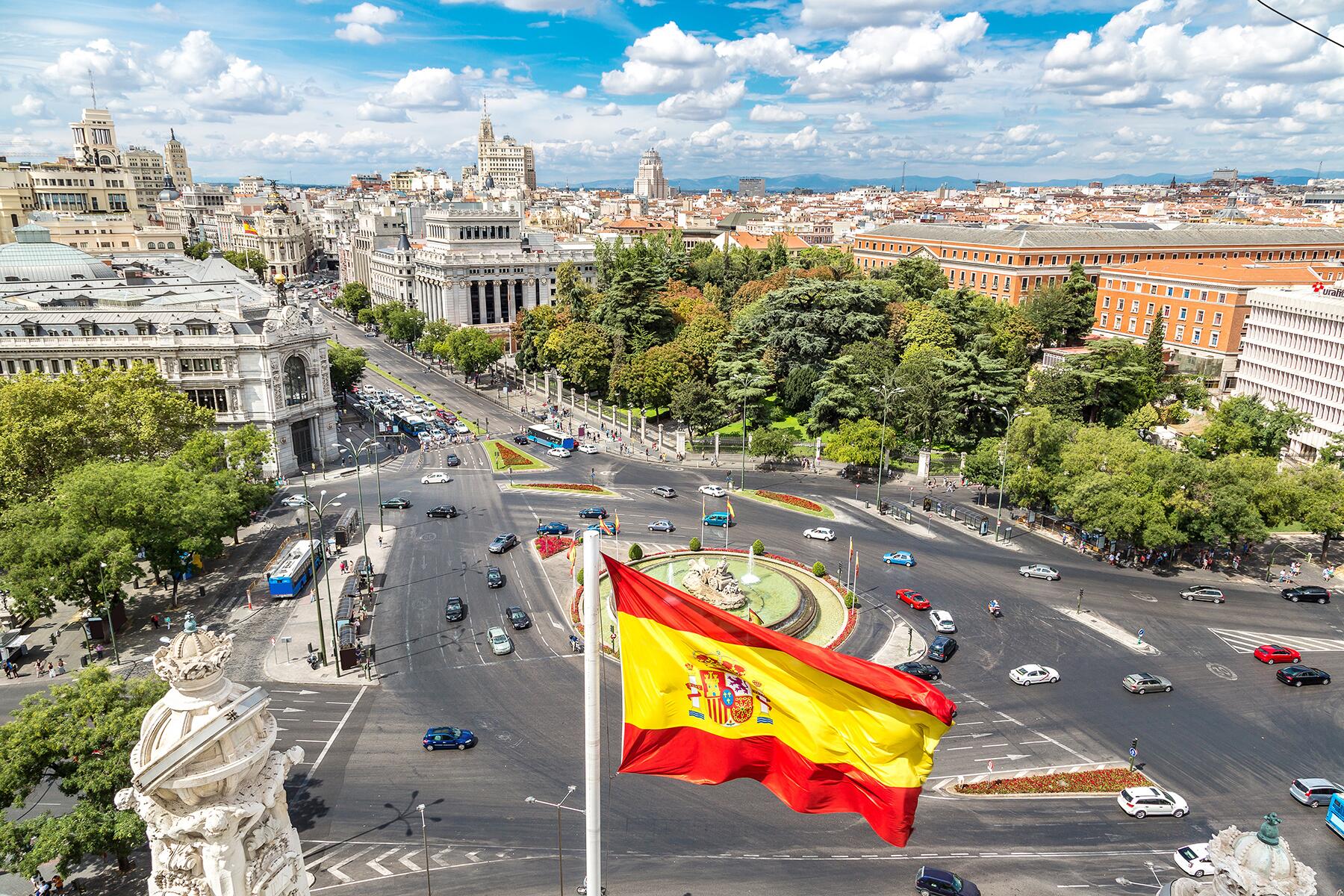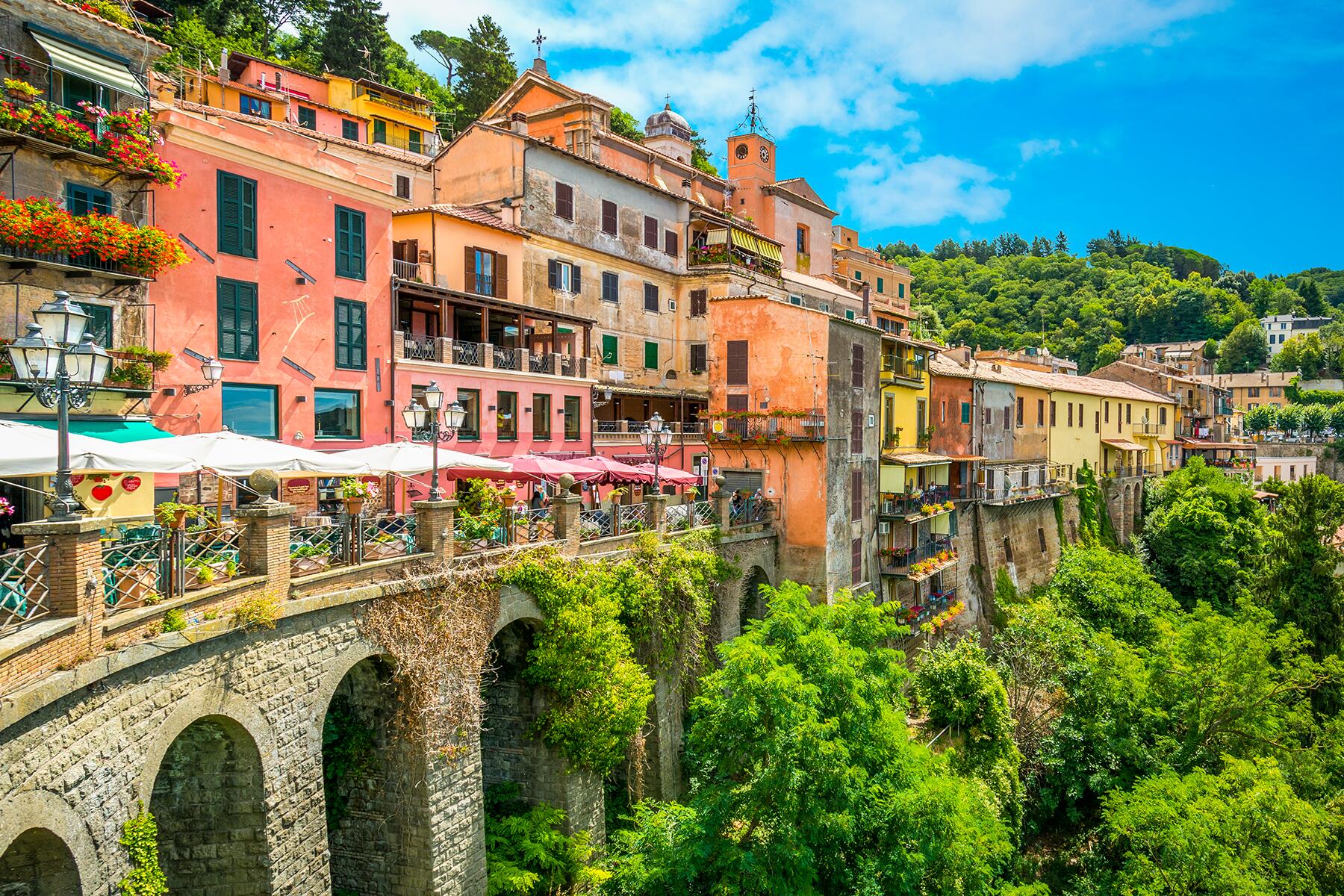To make your time in Rome even more memorable, get outside the city.
While the Eternal City is packed full enough to keep visitors entertained for days, venturing out of Rome is the perfect way to explore other parts of Italy that are close enough for a day trip. Just outside of the city center, the surrounding Lazio region offers a host of historic, foodie, and cultural sites, and slightly further away but totally manageable in a day, Pompeii, Naples, and even Florence are great options, too.
Top Picks for You
Naples
Head out of Rome on the fast train and in just over an hour you can be seated at one of Italy’s most historic pizzerias, eating the best pizza of your life. The southern city of Naples is the birthplace of pizza, and there’s so much more to tantalize the senses in ol’ Napoli. Visit churches and galleries, or choose to explore the neighborhood food markets or gaze at the street art.
Florence
Italy’s Renaissance heart is less than two hours away from the center of Rome, thanks to the country’s high-speed trains. Walk the famed Ponte Vecchio, gaze in awe at the resplendent Duomo, see the original statue of David in the Uffizi Gallery (or his replica in Piazza della Signoria), and take in the gorgeous river and city views along the Arno. Florence from above is also magical from Piazzale Michelangelo, the popular lookout point. A short walk from the main central attractions, enjoy a more local feel in the Oltrarno area filled with great bars and family-run shops.
Recommended Fodor’s Video
Pompeii
Numerous tour companies run day trips and excursions from Rome to Pompeii daily. Don’t miss the ancient ruins of the volcano-struck city frozen in time, located about two hours south of the capital city. Tours generally include a lunch in the area and your entry to the world-famous archeological site. The best part is that on the way you get to enjoy panoramic views of the Gulf of Naples, and in summer you can also hike up the side of Mount Vesuvius and check out its volcanic crater.
Viterbo
Located in the Tuscia region just outside Rome and surrounded by other medieval villages, Viterbo became known as the City of Popes in the 13th century. The Palace of the Popes has an elegant loggia and there is also a cathedral, churches, and frescoed palaces. Despite being heavily bombed during World War II, the medieval walled town is still intact and with regular bus connections from Rome, it’s a pleasant and easy day trip out of the city.
Saturnia
Two hours from Rome, Saturnia is a Tuscan gem and a dream for spa lovers. The area is rich in thermal hot springs and the main park area is open and free to the public. Of course, there are hotel spas too (although these cost money). The Romans believed the warm waters had healing powers and were a gift from the gods. The Greeks, Romans, and even Etruscans have settled here and many of its ancient ruins are still intact.
Frascati/Ariccia/Castelgandolfo
The Roman countryside is less than an hour’s drive southwest of the city and is all rolling green hills and excellent food and wine. The three most popular towns are all located a short distance from the other: villa-filled Frascati is known for its famed local white wine of the same name while Arricia is famous for its porchetta (spiced rolled roast pork). And overlooking Lake Albano is the town of Castelgandolfo, home to the Pope’s summer residence.
Villa d’Este, Tivoli
Tour companies run daily trips from Rome to the 16th-century villa, Villa d’Este in Tivoli. Otherwise, good transportation connections make it easy to navigate there on your own. The stunningly curated gardens and UNESCO Heritage Site fountains are quite spectacular; don’t miss the famous Oval Fountain and Hundred Fountains. At Hadrian’s Villa, you can tour the archaeological remains of temples, libraries, and thermal baths.
Ostia Antica
Rome has its very own ancient city to rival Pompeii and it’s less than an hour from the city center. Ostia Antica remains one of the best-preserved archeological sites in Italy. The protected site and walled former city boasts a large amphitheater, examples of former Roman homes, and plenty of beautiful statues. Be sure to look down to see what’s left of the intricate mosaic flooring.
Orvieto
Easily connected to Rome by train (two hours), experience the striking hilltop town of Orvieto for a taste of the region of Umbria. Highly regarded as one of the most beautiful cathedrals in Italy, the gothic-style Duomo is the town’s impressive and imposing centerpiece. Another thing to keep you busy is the fascinating 2,500-year-old underground tunneling system which contains more than 1,200 tunnels, passageways, stairwells, and caves to explore (tours depart daily). And if a leisurely stroll is what you’re after, Orvieto has many wine shops, restaurants, and specialty shops and boutiques.
Assisi
Since the 13th century, pilgrims have visited the Umbrian town of Assisi to honor Saint Francis, who was born and buried in the town. Still a popular destination for both religious and history buffs alike, be prepared to see groups of pilgrims and even monks in their traditional long brown robes walking around. Beyond the most important and most visited attraction, the Basilica of St Francis, the town is also home to many other impressive churches including San Rufino Cathedral and Santa Maria Sopra Minerva.
Santa Marinella
A longtime favorite seaside town for Romans, Santa Marinella is about a 40-minute train ride away and a perfect spot for a beach escape, especially in the summer months when the heat of the city gets unbearable. Towels and umbrellas line the shoreline and can be hired for a nominal fee. With many of local restaurants serving quality and reasonably priced seafood, it makes for the perfect day away.
Calcata
Often described as a town where time stands still, Calcata is an artistic hippy commune that sits on what’s left of a volcanic cliff. While there was life in the town long before the Romans arrived, this most current bohemian installation came to be in the 1960s and ’70s. The tiny yet pretty village has steep and narrow cobblestone streets full of local artisans showing off their wares in workshops, and small galleries and just a handful of charming places to eat and drink.
Nemi
Just 45 minutes outside of Rome, you could visit Nemi to view the Alban Hills or the volcanic crater remains that now make up Lake Nemi, but it’s actually most famous for wild strawberries. The microclimate of the area means the fruit organically grows on the sides of the aforementioned volcanic crater and in the surrounding woods. These fragoline di bosco are smaller and sweeter than commercial varieties, and each year, from the end of May or early June, Romans flock here to feast on them during a two-week long festival and for a dip in the lake.




